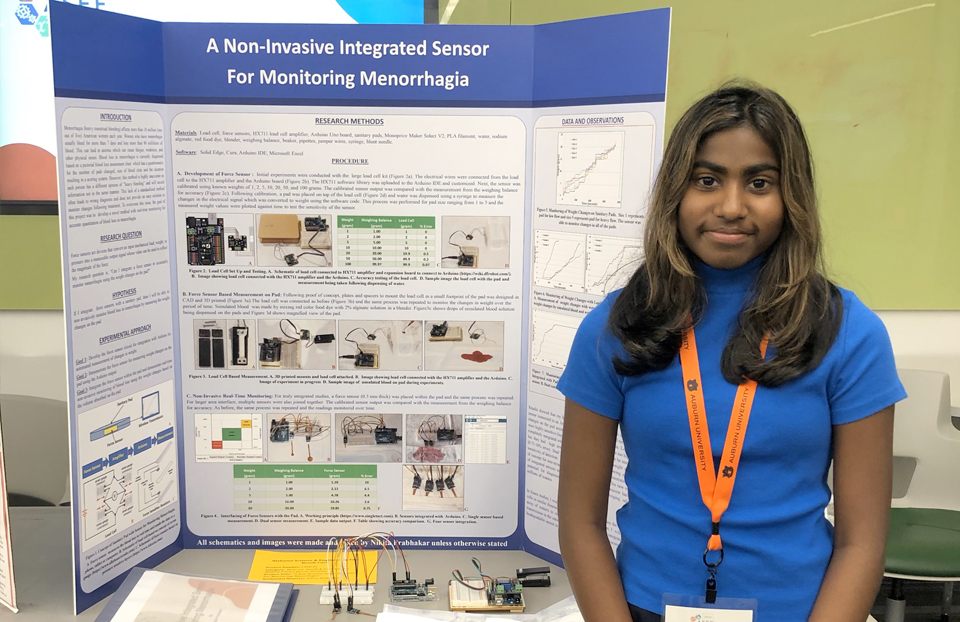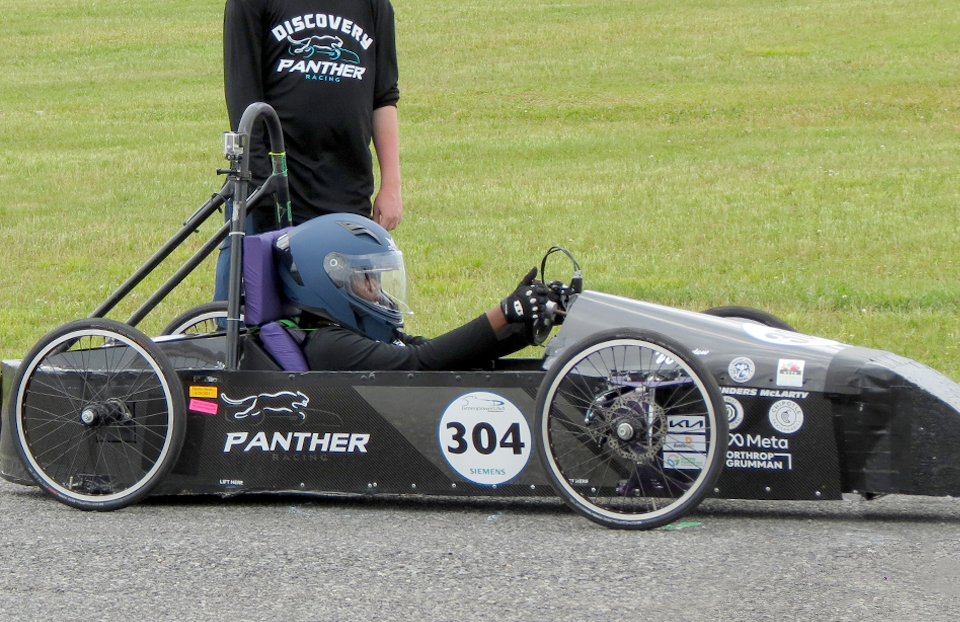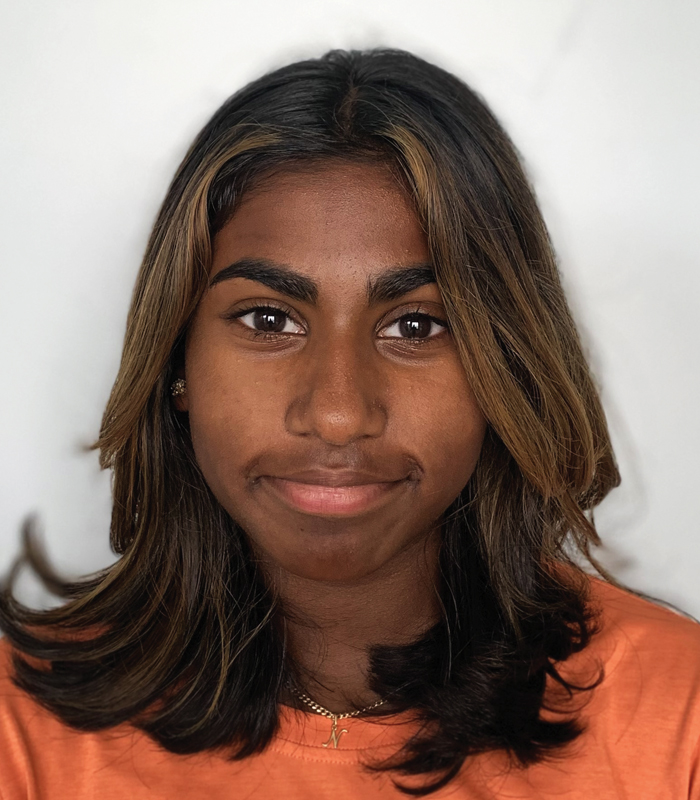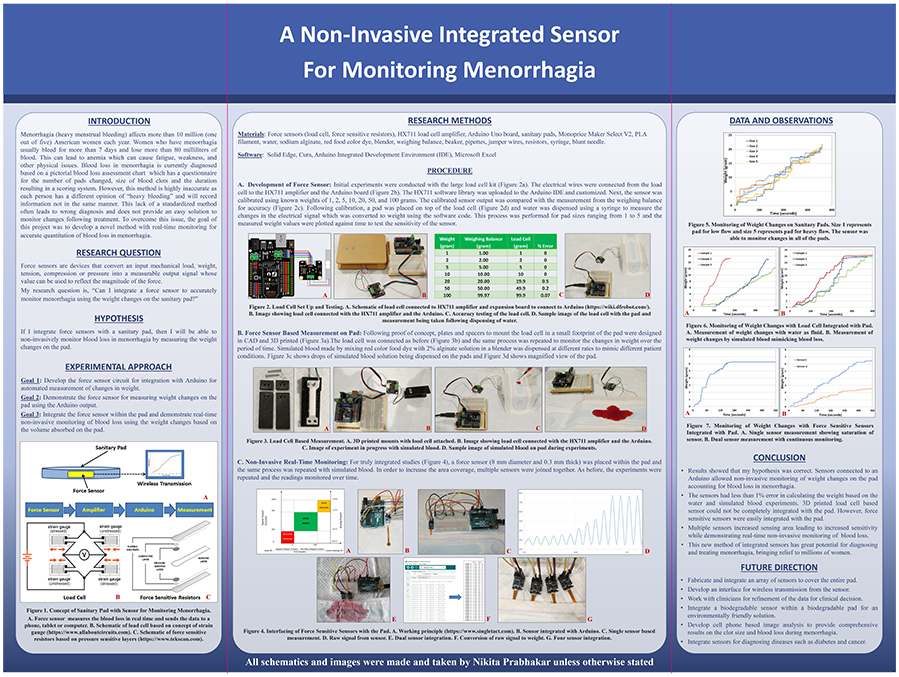Nikita Prabhakar
7th Grade, Discovery Middle School
Madison, AL
Nikita designed a sensor setup to insert into sanitary pads to monitor blood volume loss.
A Non-Invasive Integrated Sensor for Monitoring Menorrhagia
VIEW POSTERProject Background
One day, Nikita’s family friend talked about her experiences with endometriosis. It’s a painful disease where tissue similar to that which lines the uterus grows where it shouldn’t. Curious about the condition, Nikita researched it. She found that endometriosis can also cause excessive menstrual bleeding, called menorrhagia. To her surprise, doctors rely on questionnaires and pictorial charts to figure out period blood loss volume. This can be subjective and inaccurate, Nikita says. “I then came up with the idea of integrating sensors with sanitary pads that can automatically measure the actual blood loss.”
Tactics and Results
Nikita designed and 3-D printed weight sensors that could be placed inside a sanitary pad and track data in real time. Her first sensor design was 47 millimeters long, 12 millimeters wide and 6 millimeters tall, or about 2 inches by 0.5 inch by 0.25 inch. She wired up the sensors to a computer, where a software would convert the weight readings to fluid volume. But these sensors ended up being too large to comfortably sit in a pad. So, Nikita instead connected two tiny sensors, each 0.3 millimeters thick and 8 millimeters in diameter. That’s about 0.01 inches tall and 0.3 inches wide. These could easily be mounted inside a pad and hooked up to the same circuit. Nikita found that the sensors were highly accurate at detecting fluid volume when she added simulated blood. The readings were within 1 percent error compared to weight shown when measured with a scale. This project, Nikita says, “has great potential for diagnosing and treating menorrhagia, bringing relief to millions of women.”

Beyond the Project
In the future, “I will first make a custom array of sensors to cover the entire pad,” Nikita says. She would also make the sensors connect to computers wirelessly.
Other interests
Nikita enjoys playing tennis and violin and participating in Scholar’s Bowl and math team. She also likes being the driver of her Greenpower racing team, which builds and races electric cars. In the future, Nikita hopes to be a surgeon. “With the new generation of robotic instruments, treatments and artificial organs,” she says, “I am excited to be part of the future.”


